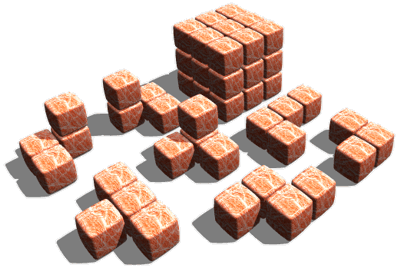Soma cube

The Soma cube is a mathematical puzzle devised by Piet Hein in 1936 during a lecture on quantum mechanics by Werner Heisenberg in which the great German physicist was describing a space sliced into cubes. In a moment of genius, Hein grasped that the result of combining all seven of the irregular shapes that can be made from no more than four unit cubes joined at their faces is a single larger (3 × 3 × 3) cube.
The Soma cube was first brought to popular attention by Martin Gardner in his "Mathematical Games" column in Scientific American in 1958.1 All 240 possible solutions were first identified by John Conway and Michael Guy in 1961. The pieces can also be used to make a variety of other interesting three-dimensional shapes so that the Soma cube is often regarded as a three-dimensional analog of Tangrams. It is unclear whether the puzzle is named after the fictitious drug "soma" in Aldous Huxley's novel Brave New World.
Reference
1. Gardner, M. The Second Scientific American Book of Mathematical Puzzles & Diversions. New York: Simon and Schuster, 1961.


